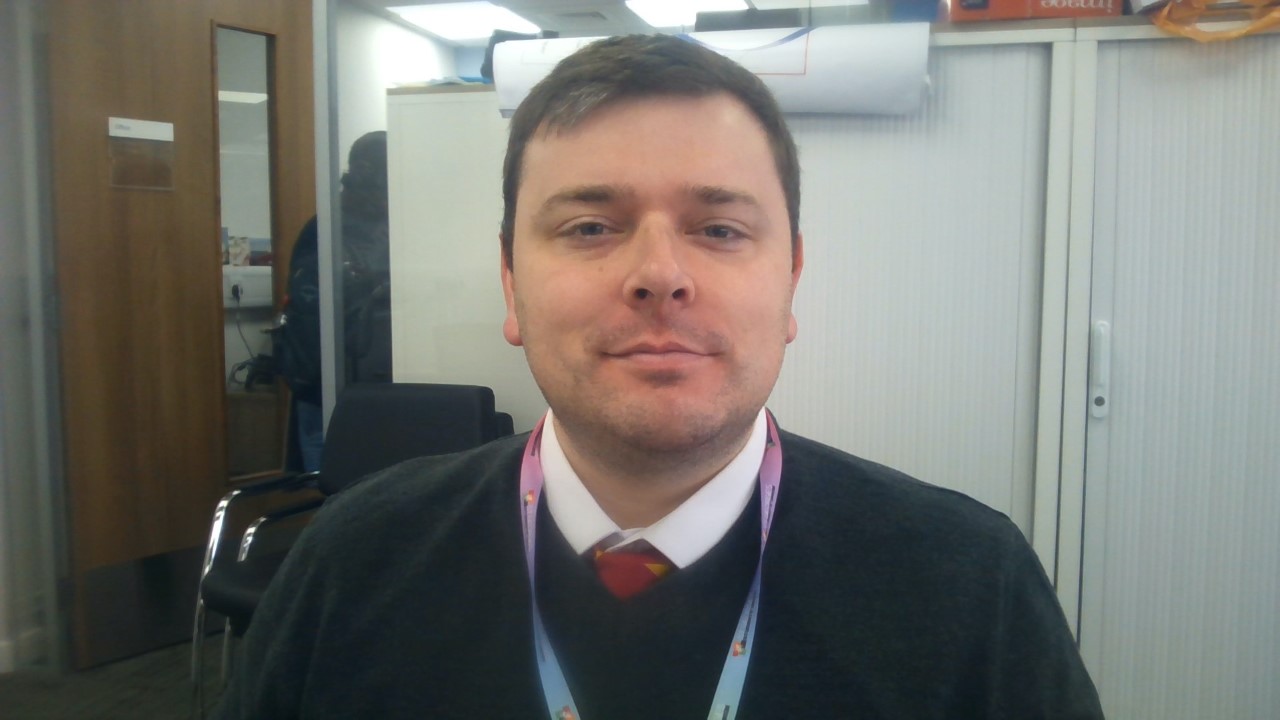Ricky Lawless, from our Diagnostic Radiography department, speaks about the transition from student to lecturer

Class of 2011 Diagnostic Radiography alumnus, Ricky Lawless, is a Senior Lecturer in Diagnostic Radiography at St George’s. Reflecting on how his degree helped prepare him for his current role, he says, “I have had ten years in clinical practice between graduating and starting as a lecturer. In that time, I completed a PgC and PgD in clinical reporting (Advanced Practice). I had my struggles, and I was able to work through them and graduate. That gives me the belief that I can help others do the same.”
“The switch from teaching students clinically at placement sites to teaching them in the academic setting is very different. This challenge focuses mainly on adapting my teaching style to fit the setting.”
“I have always enjoyed working with the radiography students. We had Kingston/St George’s students at my hospital, so it was easier for me to empathise with their studies and know their processes. I still feel that same joy from seeing them progress from students to competent practitioners.”
Speaking about what he enjoys most about working at the Centre for Allied Health, he says, “I really enjoy being part of such a supportive team, with brilliant resources to hand - not just in Diagnostic Radiography, but across the whole Faculty”.
Sharing advice with those interested in working in a similar role, Ricky says: “Get as much experience as you can in standard areas of the radiology department and show a willingness to teach students. The more experience you have, the easier it should be to teach hands-on work.
“On the academic side of things, it is best to try and apply yourself to post-graduate study to some level to continuously challenge yourself. That will help you when you have to do the ‘written’ aspects of the job.”
Speaking to current students, he adds: “Diagnostic radiography is not a sprint. Rushing an x-ray or scan for your patient is not going to benefit anyone because it could lead to a mistake. So, take your time and do it properly first time. That includes exams and assessments.”
“It is also a continuously growing profession with technological advancements happening all the time. Immerse yourself in it by going to study days, attending conferences, and reading the society articles and journals. If you do this, you will always be on top of your career pathway and progression.”
Speaking about why he would recommend the course to prospective students, Ricky shares, “I can recommend St George’s for its fantastic team of lecturers with a diverse range of experience who are committed to the students.
“We have an excellent range of resources to help students to develop the skills they need to become confident, competent practitioners - for example, we have access to the instiutions dissection room, library resources, our own x-ray simulation room within Diagnostic Radiography and virtual reality software. Our simulation room includes two x-ray machines, a portable x-ray, theatre image intensifier and ultrasound machines. We are also investing more time into virtual reality simulation teaching, which has been developed by radiographers for teaching the next generation.”